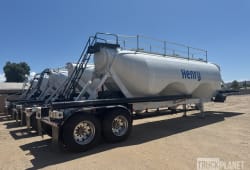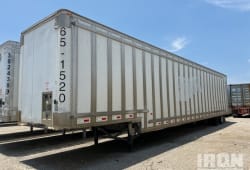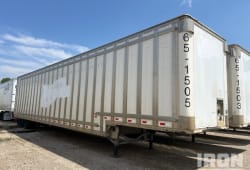Discovering the Pros and Cons of Dome Construction
5 Min read
)
May 23, 2024
Dome construction, characterized by its rounded, hemispherical shape, has been a significant architectural form throughout history. From ancient structures like the Pantheon in Rome to modern geodesic domes designed by Buckminster Fuller, domes are admired for their aesthetic appeal and structural benefits. This article explores the pros and cons of using domes in construction, providing a comprehensive understanding of why this architectural style continues to captivate builders and designers. To know about flat roof construction click here.
Pros of Using Domes in Construction
Structural Strength
Load Distribution:
The curved shape of a dome evenly distributes stress and weight across its entire surface, making it incredibly strong and capable of supporting heavy loads. This inherent strength allows domes to withstand significant external pressures, providing stability and durability.
Resistance to Natural Disasters:
Domes are highly resistant to natural disasters such as earthquakes, hurricanes, and tornadoes due to their aerodynamic shape and structural integrity. The lack of flat surfaces minimizes wind resistance and pressure points, reducing the likelihood of damage. This makes domes an excellent choice for areas prone to extreme weather conditions.
Relevant material: How To Make Building Earthquake Proof
Energy Efficiency
Thermal Regulation:
Domes have a low surface area-to-volume ratio, which helps in maintaining a stable internal temperature. This design reduces the amount of external wall area exposed to outside temperatures, leading to better insulation. As a result, domes can significantly lower heating and cooling costs, contributing to energy savings.
Air Circulation:
The shape of a dome facilitates natural air circulation, reducing the need for artificial heating and cooling systems. The continuous, curved interior promotes efficient airflow, enhancing overall energy efficiency and indoor air quality.
Aesthetic Appeal
Unique Design:
Domes offer a distinctive and eye-catching design that can make buildings stand out. Their elegant curves and symmetry appeal to modern architects and designers looking for innovative styles. This unique aesthetic can enhance the visual impact of a building, making it a focal point in its environment.
Versatile Interiors:
The open interior space of a dome allows for creative and flexible use of the area, accommodating various architectural and design ideas without the need for internal support columns. This flexibility can lead to innovative and functional interior layouts.
Cost-Effectiveness
Material Efficiency:
Domes often require fewer building materials compared to traditional rectangular structures of the same volume. The efficiency of the shape can lead to cost savings in materials and labor. This makes dome construction an economically viable option for many projects.
Longevity:
The durability and resistance to weathering of dome structures mean they often have a longer lifespan, reducing maintenance and replacement costs over time. The robust construction can withstand harsh environmental conditions, ensuring long-term performance.
Sustainability
Eco-Friendly Materials:
Many modern dome constructions utilize sustainable materials such as earth, bamboo, and recycled components, aligning with environmentally conscious building practices. This use of sustainable materials can reduce the environmental impact of construction.
Minimal Environmental Impact:
The efficient use of materials and energy in dome construction reduces the overall environmental footprint of the building process. Domes can be designed to blend harmoniously with their surroundings, promoting ecological balance.
Cons of Using Domes in Construction
Complexity in Design and Construction
Specialized Knowledge:
Designing and constructing domes requires specialized architectural and engineering knowledge. Builders must be familiar with unique construction techniques, which can limit the pool of available contractors. This specialized skill set can also lead to higher design and labor costs.
Construction Challenges:
The curvature and unique geometry of domes can present challenges during construction, requiring precise measurements and techniques to ensure structural integrity. These complexities can extend the construction timeline and increase costs.
Limited Living Space Utilization
Furniture Placement:
The curved walls of a dome can make it difficult to place standard furniture and appliances. Custom furniture may be required to fit the interior spaces efficiently. This can increase the cost of furnishing the dome and limit interior design options.
Vertical Space:
While domes offer ample horizontal space, the vertical space can sometimes be underutilized, posing challenges for multi-story construction or specific design requirements. Creative solutions are needed to maximize the use of vertical space.
Initial Cost
Higher Upfront Investment:
Although domes can be cost-effective in the long run, the initial construction costs can be higher due to the need for specialized materials and skilled labor. This higher upfront investment can be a barrier for some projects.
Design Costs:
The unique design process for domes often involves higher architectural fees and longer planning phases, adding to the initial investment. These additional costs need to be factored into the overall budget.
Permitting and Zoning
Regulatory Hurdles:
Due to their unconventional shape, domes can face challenges in obtaining building permits and meeting zoning regulations, which are often designed with traditional building forms in mind. Navigating these regulatory hurdles can be time-consuming and costly.
Code Compliance:
Ensuring that dome structures comply with local building codes and standards can be more complicated and time-consuming. This complexity can add to the project timeline and cost.
Maintenance and Repair
Accessibility Issues:
The curved surfaces of domes can make maintenance and repairs more difficult, requiring specialized equipment and techniques. Regular upkeep can be more challenging compared to conventional buildings.
Material-Specific Concerns:
Depending on the materials used, certain types of domes (e.g., those made of earth or natural materials) may require more frequent maintenance to address issues like erosion or weathering. This ongoing maintenance can add to the long-term cost.

Post acquisition of Boom & Bucket, the company he founded, Adam now leads Marketplace Growth for Ritchie Bros.











